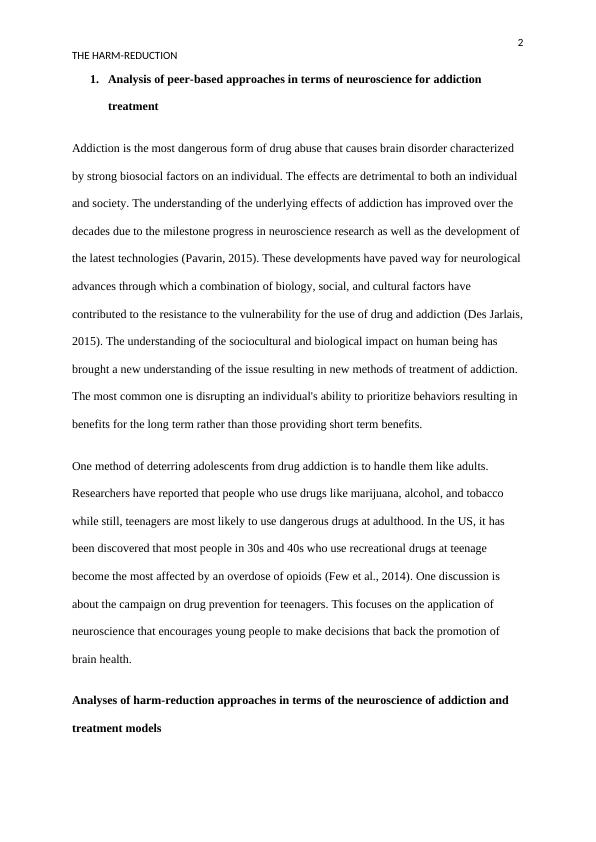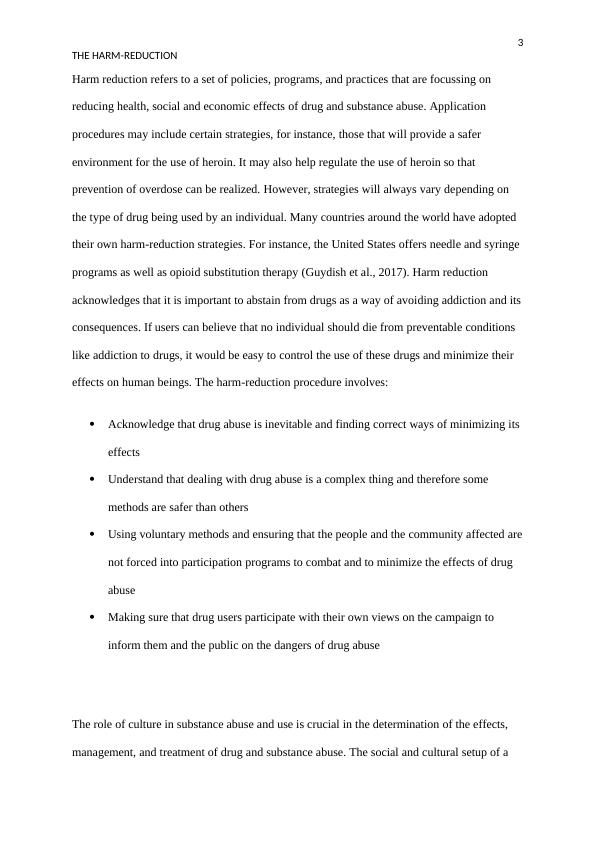Analysis of Peer-Based Approaches in Addiction Treatment
Discuss the applicability of harm-reduction and peer-based approaches for a selected contemporary issue in addictions.
7 Pages1400 Words387 Views
Added on 2023-04-11
About This Document
This article analyzes peer-based approaches in addiction treatment, focusing on neuroscience and treatment models. It also discusses the utility of traditional and current treatment approaches to diverse populations and provides recommendations for addiction treatment programs specific to behavior or substance abuse.
Analysis of Peer-Based Approaches in Addiction Treatment
Discuss the applicability of harm-reduction and peer-based approaches for a selected contemporary issue in addictions.
Added on 2023-04-11
ShareRelated Documents
End of preview
Want to access all the pages? Upload your documents or become a member.
Medicinal and Recreational Use of Opioids
|11
|2981
|221
Opioid Epidemic: Causes, Effects and Society's Attitude
|6
|1073
|278
Opioid Harm Prevention
|6
|1157
|221
Naloxone Medication: A Safe and Effective Treatment for Opioid Overdose
|12
|3376
|313
Implication of Executive Order 16-09
|8
|2131
|183
Implication of Executive Order 16-09
|8
|2073
|440



